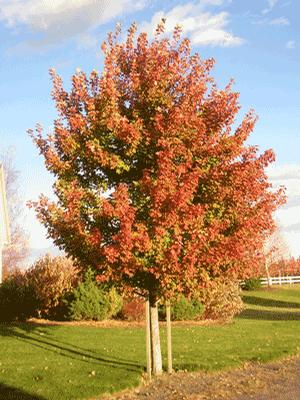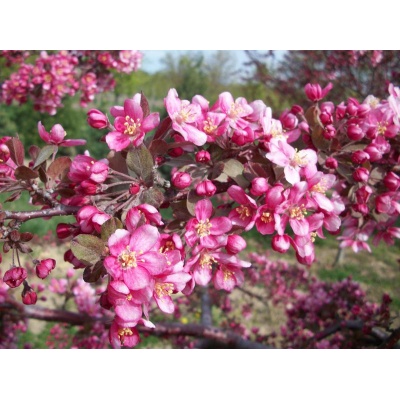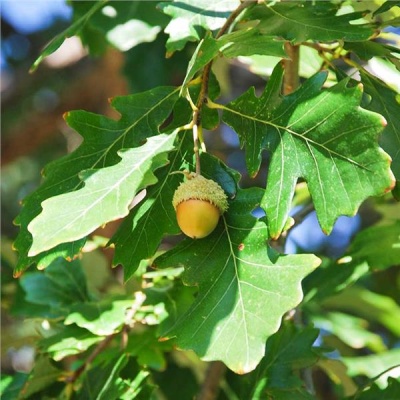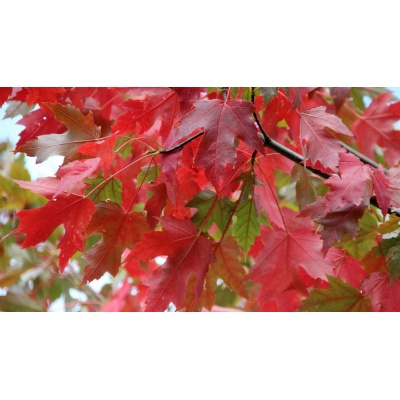Description
 Sienna Glen Maple
Sienna Glen Maple
Acer x freemanii ‘Sienna’
The Sienna Glen Maple tree is a naturally occurring hybrid found on an abandoned farmstead in Lake Elmo, Minnesota. Its distinct, upright, pyramidal growth habit, which is readily apparent as a young tree, grows and becomes a broad pyramid when mature. The Sienna Glen exhibits vigorous growth yet withstands strong winds. The branches are borne more closely together along the trunk (than those of Autumn Blaze) and are finer and more delicate, yet the wood is harder and shorter and exhibit less drooping. The smaller, fine textured green leaves are dark green with a silvery underside and turn a variable mix of yellow and orange with a pinkish tinge at the highest part of the crown. As the fall color finishes, it turns a burnt orange. This beauty tolerates higher soil pH unlike Autumn Blaze, not exhibiting any chlorosis. Hardiness zone 4 (testing done in zone 3). Mature growth is around 60′ tall x 40′ wide.
Height: 15 m
Crown: pyramidal to broad pyramidal, dark, dense crown
Bark and branches: smooth, grey-brown
Leaf: 3 to 5 lobes, shiny, bright green with light red stem, 8-10 cm
Autumn color: orange, red
Flowers: reddish flower corymbs, female flowers, March/April
Fruits: single seeds, winged, always in pairs, few or entirely absent,
fruitless cultivar
Spines/thorns: none
Toxicity: non-toxic (usually)
Soil type: any, but not too limy
Paving: tolerates paving
Winter hardiness zone: 4 (-34,4 to -28,9 °C)
Wind resistance: good
Fauna tree: valuable for butterflies
Application: avenues and broad streets, parks, squares, theme parks, cemeteries, large gardens




Reviews
There are no reviews yet.